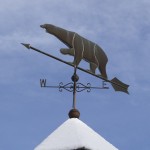John Clifford Holt, Bowdoin’s William R. Kenan, Jr., Professor of the Humanities in Religion and Asian Studies, has edited a new anthology that brings to life the epic history, cultural richness and political turbulence of the island nation of Sri Lanka.
The Sri Lanka Reader (Duke University Press, 2011), is one in a series of World Readers published by the press. Reviewers have described the book as a comprehensive work that is “unprecedented” … one that “will undoubtedly become the standard collection of documents on Sri Lanka and its history.”
The Sri Lanka Reader is 772 pages in length and includes more than 105 classic and contemporary texts by and about Sri Lankans, including monastic chronicles, short stories, cutting-edge newspaper journalism, and modern and ancient poetry.
There are 15 new translations from Sinhala and Tamil that are being published in English for the first time, and 54 images of paintings, sculptures, and architecture. Holt introduces each section with an informative overview essay, and each individual entry with a brief description of its wider significance.
“Sri Lanka is an island unto itself, but one that has been influenced from many directions throughout its long and varied history,” notes Holt. “It remains an enormously complicated society. The point of the book is to trace out the political history of the island through cultural sources. What Sri Lanka actually is remains a contested issue today, so the task of being representative and balanced also proved to be challenging.”
Sri Lanka’s historical records stretch back more than two and a half millennia, and include waves of immigrations from various regions of the South Asian subcontinent, as well as the arrival of Arab Muslim traders, and later, colonial interventions by the Portuguese, Dutch, and British.
Holt says he worked through a great variety of sources for engaging material that would be “fair to all of the contesting identities in Sri Lanka and have a bearing on the contemporary conflicts in the country.”
In one entry, Ibn Batuta, a famous Muslim 14th century traveler, writes of flying leeches, gem mines and encounters with sultans. A section on the British colonial presence includes diary entries and a short story about caste written by Leonard Woolf during his years as a colonial civil servant on the island.
Contemporary entries depict and analyze the political upheaval, violence and civil discord that have rocked the island for the past fifty years: the youth uprising of 1971; political violence between the Sinhalese majority and the Tamil minority; a labor exodus of Sri Lankan women in the 21st century to the Middle East, etc.
Many of the works included give voice to writers and artists whose works have yet to receive public acclaim.
“I found myself reading all kinds of things that I normally wouldn’t because my scope for this project had to be so much broader,” says Holt. “I learned an awful lot by reading through travelers’ reports going back several centuries — first person accounts from pilgrims, kings, colonial governors, adventurers, merchants, missionaries, in addition to academic analyses from a variety of disciplines.
“I’m hoping this book will be a gateway to the field and help to set the agenda for people who are coming into Sri Lankan studies,” notes Holt. “Additionally, I want it to benefit the intelligent Sri Lankan reader who hopes to appreciate the island’s variegated social and political history.
Holt has been studying and writing about Sri Lankan religion, history and culture since the 1970s. He established the Intercollegiate Sri Lanka Education (ISLE) Program in 1982, the only undergraduate study abroad program in Sri Lanka.
He is the author of eleven books, including Spirits of the Place: Buddhism and Lao Religious Culture (Hawaii, 2009), The Buddhist Visnu: Religious Transformation, Politics and Culture (Columbia, 2004), The Religious World of Kirti Sri: Buddhism, Art and Politics in Late Medieval Sri Lanka (Oxford, 1996) and Buddha in the Crown: Avalokitesvara in the Buddhist Traditions of Sri Lanka (Oxford, 1991), the last selected by the American Academy of Religion for its Book Award for Excellence in 1992.
